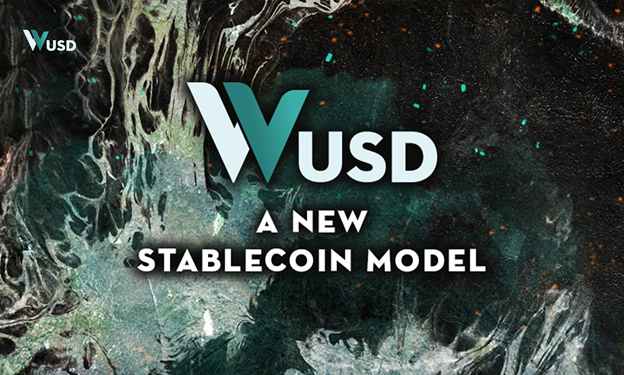At their 2021 peak, stablecoins were settling between $10 billion and $30 billion in transactions each day, data from Coinmetrics reveals. Therefore it’s fair to say, these digital assets are becoming more relevant for the crypto industry.
However, there are many blind spots and concerns with some of the most popular stablecoins, such as Tether. Many go against the foundational principles of cryptocurrencies and blockchain technology because they rely on third parties for custody, governments for approval, and possess other potential points of failure.
Recently though, cross-chain protocol Wault Finance has come up with a stable mechanism to introduce a new type of stablecoin, WUSD. Wault was launched in Q1, 2021 with under $150,000 in market cap, and has climbed its way up to one of the top platforms on the Binance Smart Chain (BSC) and Polygon ecosystems.
Their stablecoin WUSD will operate with a commerce-backed mechanism to mitigate the limitations and trade-offs that affect other digital assets, which we will explore.
Wault Finance’s New Stablecoin and Its Positive Effect on the Market
Wault Finance was created to offer users a one-stop-shop for the most popular and efficient DeFi-based use cases with some of the lowest fees in the crypto space. Users can benefit from WaultSwap, the protocol’s DEX, a launchpad, and a liquidity locker, to both discover new projects and launch their own.
Though the Wault protocol was launched without the assistance of venture capitalists, it has become a highly profitable platform currently with over $300 million in total value locked (TVL) and having reached an all-time high of $1.5 billion before the mid-May market drop. What’s most interesting about Wault’s existing platform though, is it will serve as the foundation for the stability mechanisms that support WUSD. In other words, Wault Finance and its revenues will systemically reinforce multiple components that guarantee WUSD’s peg to the USD.
To start, WUSD will initially be collateralized by 90% USDT and 10% by the Wault Exchange Token (WEX), the native token of the protocol’s DEX WaultSwap.
One WUSD will be minted and given to the user with every USDT deposited as collateral. After, 90% of the deposit (0.9 USDT for each 1 USDT collateral) will be held in Wault Finance’s treasury, and 10% used to buyback WEX and hold that in the treasury as well. The inverse process will also occur with every WUSD->USDT redemption. Users will receive 90% in USDT and 10% in WEX at current market price during redemption for each 1 WUSD returned.
The stablecoin stability mechanism will have 4 core components: the Wault Finance Treasury, WSwap Emissions Support, WSwap Trading Fee Support, and WUSD Staking Support. These will not only guarantee that WUSD keeps its peg, but also will provide users with more yield and reward opportunities.
The first component of the stability mechanism, Wault’s treasury, will have three revenue sources to expand itself, creating a thicker treasury to support WUSD’s peg; 15% of the WSwap DEX trading fees will go to the treasury along with a 0.5% fee charged for every WUSD redemption.
Also, Wault Finance will invest idle funds into safe external protocols to generate yields on the treasury, expanding it to have enough power to endure any market volatility. For security and transparency, the treasury will operate with a Multi-sig and Timelock mechanism.
As long as the treasury is full, the peg of WUSD will remain close to $1 because if the peg veers off, arbitragers will always be able to mint and redeem WUSD for the price of $1 and buy or sell WUSD on the market for a profit.
The WSwap Emissions Support will sustain itself on a positive cycle of reinforcement created by the buying pressure generated on WEX. The buybacks and lockup will contribute to the token’s price appreciation while bringing more trading volume and fees into the platform. However, if the price of WUSD does drop below $1, a percentage of emissions going from WSwap to the liquidity providers will inflow to WUSD’s treasury instead, thickening it during periods of volatility.
Additionally, if WUSD moves off-peg, the treasury will receive more funding support from WSwap trading fees. The 15% previously mentioned will be flexible according to the movements of WUSD’s market price. For every 0.001 under $1 that the stablecoin drops according to a 24-hour time-weighted average price (TWAP), the treasury will earn an extra 0.5% in trading fees.
The opposite will happen if WUSD rises above $1 on a 24-hour TWAP; The treasury will reduce its trading fees inflow by 0.15% down from 15% for every .001. If WUSD goes above $1.10, the inflow of trading fees would be 0%.
Liquidity providers will act as a stability mechanism as well. Upon WUSD’s launch, users will be able to provide liquidity for the WUSD-BUSD trading pair and receive WEX emissions. This is part of Wault Finance’s incentives program to encourage users to hold WUSD. The emissions going to that WUSD pool will increase when WUSD’s price is below peg, stimulating buying demand to receive higher yields. Likewise, if WUSD’s price rises above $1, emissions to the pool will decrease, which may lead to less desire to hold the stablecoin and some selling to stabilize the peg.
Wault continues to explore efficient stability mechanisms to reinforce and grow WUSD. Holders of Wault’s token WEX will also have governance power over these mechanisms and WUSD in the future, helping to shape its evolution.
